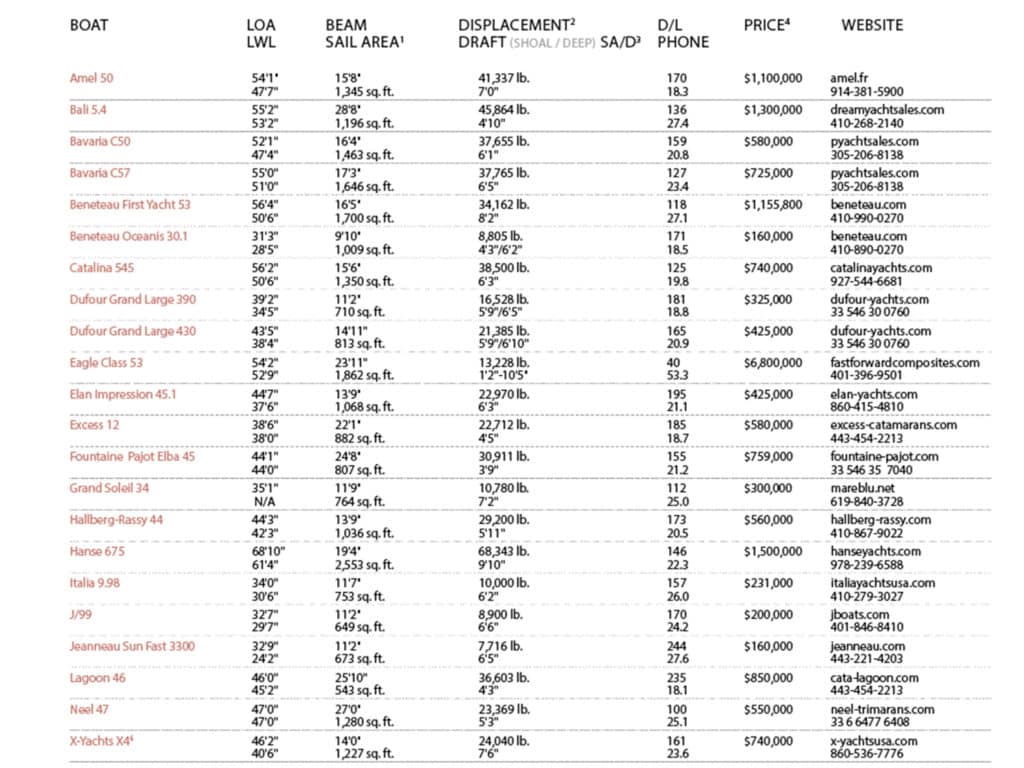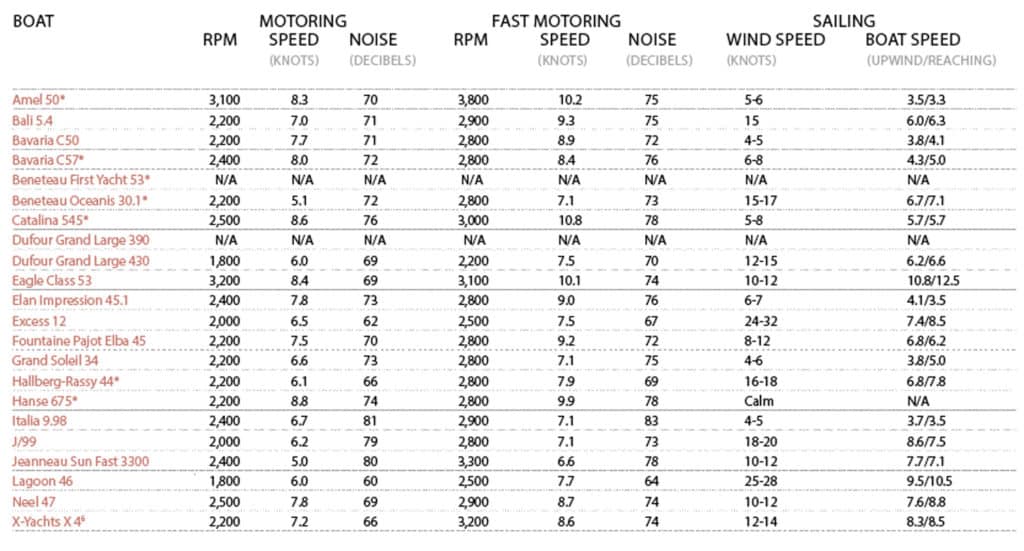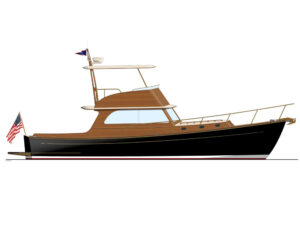Besides the obvious numbers used to describe a sailboat —length, beam, draft and sail area—CW’s Boat of the Year judges sometimes rely on sail area/displacement and displacement/length ratios, as well as decibels for sound while motoring, to compare similar vessels. One caveat, because sailboat design and building materials change over time: The design ratios work best when looking at boats of a similar era rather than comparing, say, a 1975 cruiser to a modern boat of similar size.
Let’s start with displacement/length. Displacement is a measure of how much water a particular hull form displaces, and length is, well, length. In general terms, the lower the D/L ratio is, the less water is being displaced for a given length, which would indicate better performance. Performance, though, often reflects speed, but not necessarily comfort, underway. Long-distance cruisers might get there fast on a boat with a very low D/L figure, but they might not get much sleep along the way because of the boat’s lively movement in a seaway.

Sail area/displacement is a ratio that affects how much horsepower a particular sail plan has to push a vessel. Most cruising boats today will have an SA/D number in the high teens and low 20s, with the higher the ratio indicating a more powerful rig. Again, the numbers can deceive. The trend today is toward sail plans with non-overlapping jibs. Boats sail just fine upwind, but the minute you bear away, the relatively small jib quickly becomes ineffective. This, in turn, has been a boon for the suppliers of colored sails, such as code zeros and cruising spinnakers.

Lastly, our BOTY judges measure the sound or decibel levels aboard every boat when motoring. Why? First, it’s hard to sleep on a loud boat, and if the crew can’t stay rested, it can lead to all sorts of other problems. Second, silence doesn’t come cheap. Besides a lack of proper sound insulation, rattles and creaks caused by poor construction can all contribute to the din. To put things in perspective, 50 dB is equivalent to a quiet conversation at home, and 60 dB is akin to background music at a restaurant. Noise in the upper 70 dB range can be considered annoying; above 80 dB, noise can become harmful after long exposure.
See All Winners:








